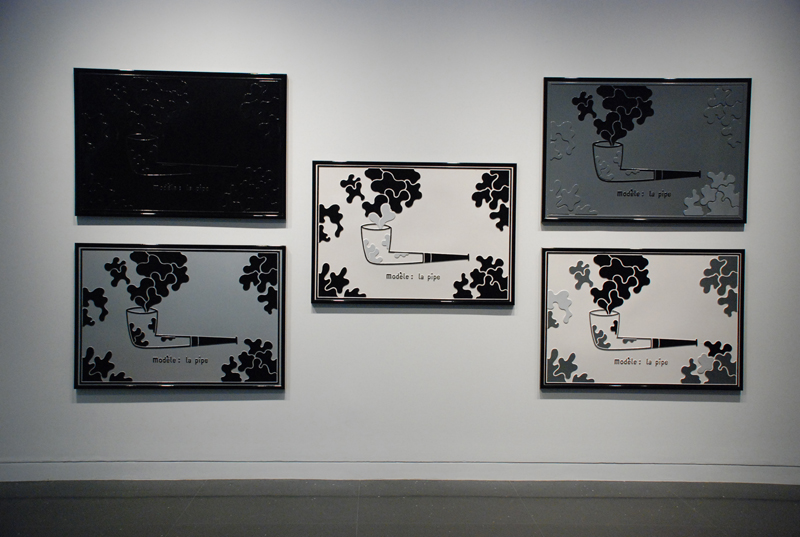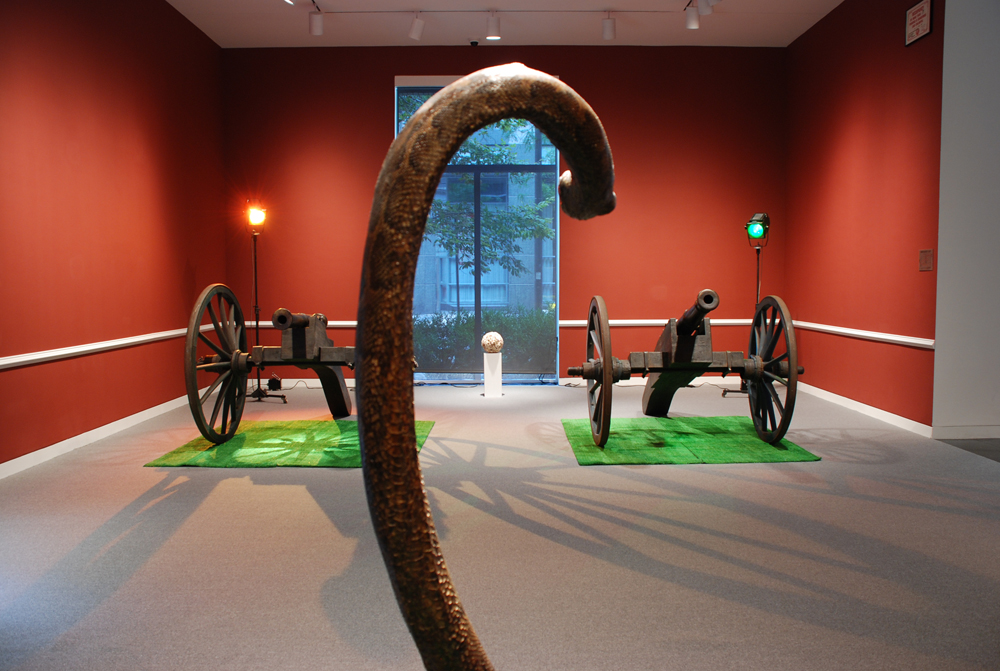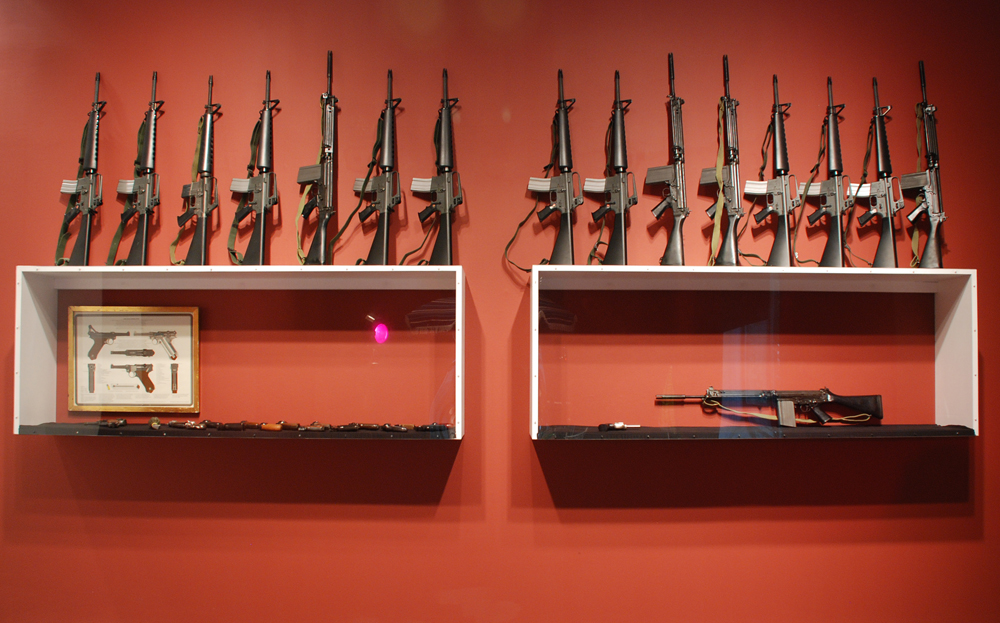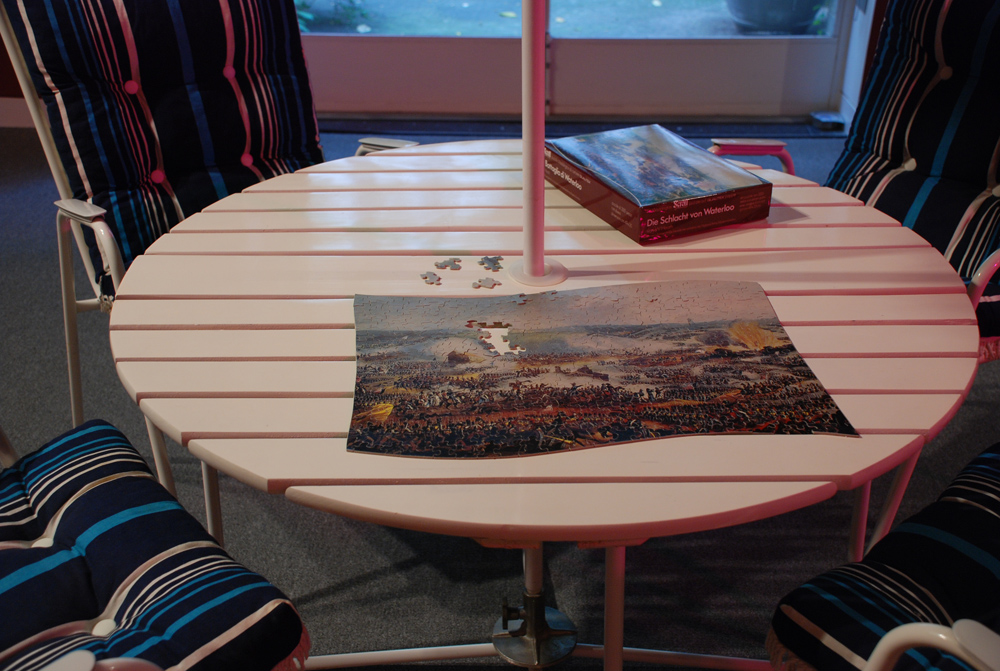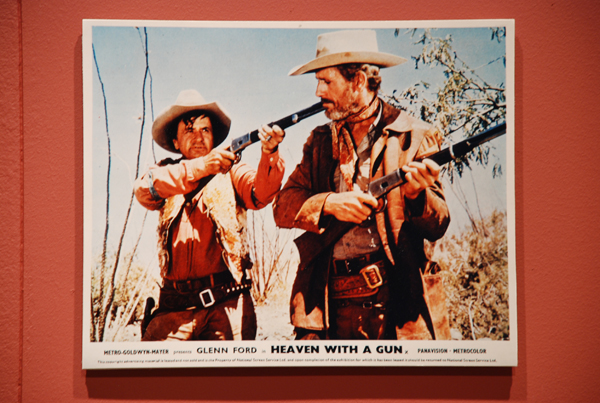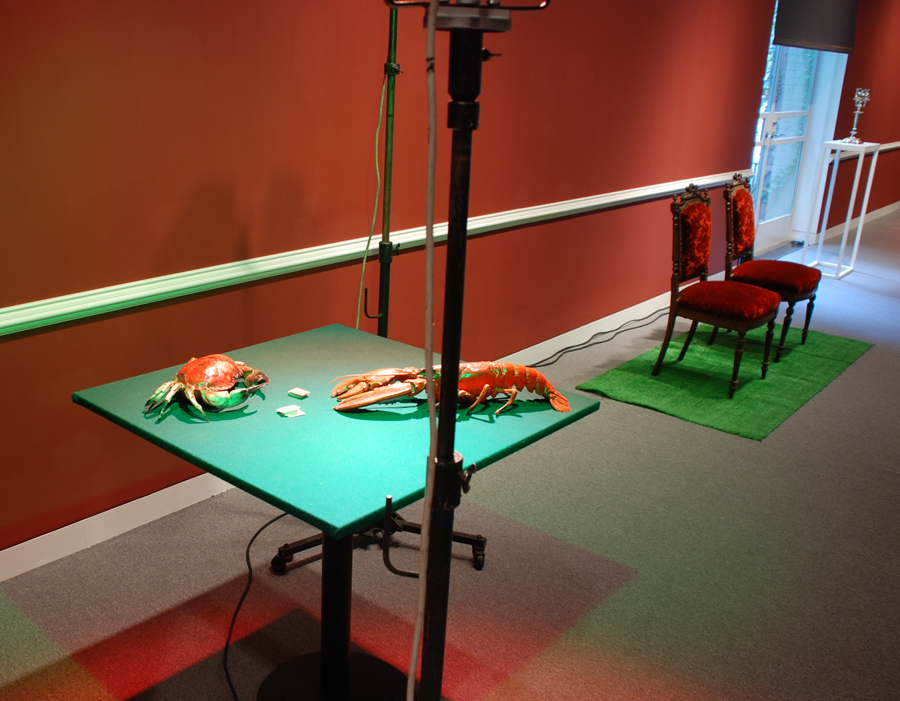Marcel BroodthaersDécor: A Conquest XIXth and XXth Century
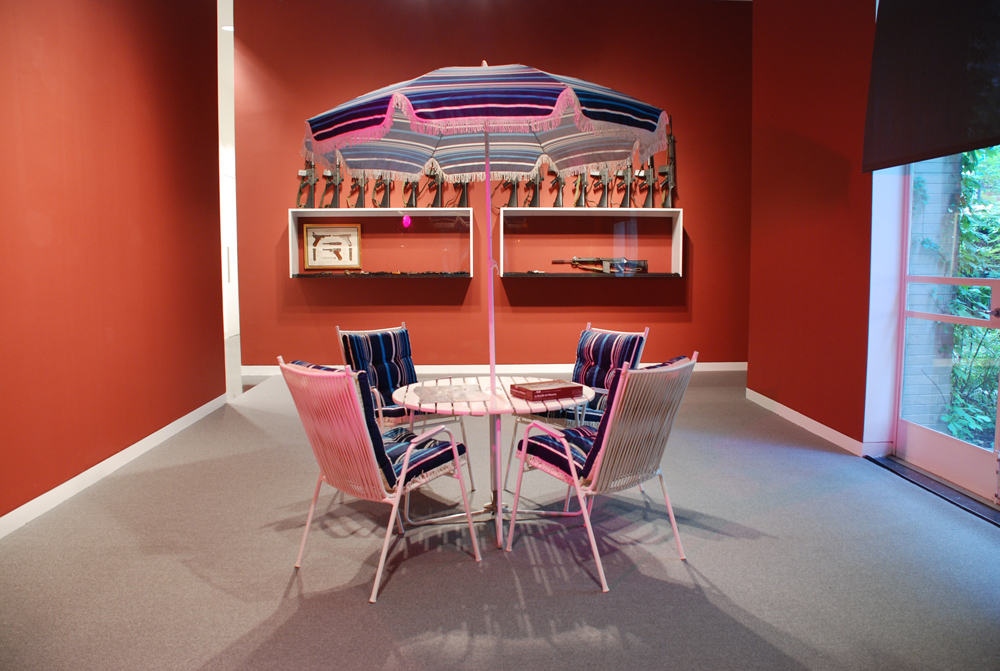

Past exhibition
Marcel Broodthaers Décor: A Conquest XIXth and XXth Century
About the Exhibition
The Arts Club of Chicago is pleased to announce the opening of an exhibition of artworks by Belgian artist Marcel Broodthaers. Included in the exhibition is Décor: A Conquest XIXth and XXth Century (1975), several works from his plaques en plastiques series (1968–72), and the slide projection piece Bateau Tableau (1973).
Broodthaers created Décor: A Conquest for the 1975 inauguration of London’s Institute of Contemporary Art (ICA) six months before his death. His stated theme of Décor is the “relationship between war and comfort.” Décor contains no works made by Broodthaers, only objects bought or borrowed. In its two period rooms, representing the 19th and 20th centuries, Broodthaers staged encounters with weapons and furniture. In Salle XIXe Siècle, he evokes 19th-century Imperialism through spot-lit objects isolated on rugs of artificial grass (Edwardian chairs, Napoleonic chandeliers, a huge stuffed striking python, Waterloo-era cannons, old revolvers, a lobster playing cards with a crab on a card table, potted palms, and a flower ball mimicking a cannonball). The Salle XXe Siècle contains modern weapons (revolvers, a hand grenade, machine guns, and operating manuals), displayed among contemporary garden furniture (a patio table, chairs, and a fringed umbrella). On the table is an uncompleted jigsaw puzzle depicting the Battle of Waterloo, after a print by William Heath. Décor (the French translation is both theater and film-set) was the backdrop for his film The Battle of Waterloo, made during his ICA exhibition. The film consists of intercut interior views of Décor, and exterior shots of the annual Trooping the Colour ceremony for the Queen’s birthday that passes in front of the ICA. Décor is Broodthaers’s “conquest” and sculptural occupation of an institution.
Bateau Tableau (1973) originates from a 19th-century amateur naval painting purchased in a curio shop in Paris. Projecting details of the painting via slides, Broodthaers relates his imagined narrative of the painting. Playing on the words bateau (boat) and tableau (painting), the painting becomes the subject of the work. As he stated, “you have believed to see a painting, but nevertheless you have seen a film.” The plaque en plastiques (1968–72) are vacuum-formed plastic works that combine Broodthaers’s visual and verbal humor. A new medium that he discovered in the street, they were fabricated by industrial workers interpreted from his sketches.
About the Artist
Born in Belgium, Marcel Broodthaers (1924–1976) made his decision to become a visual artist at the age of 40 and equated art-making with “inventing something insincere.” His work across a diverse range of media examines the nature of the work of art and the forms of institutional support, especially the art museum. He became a major influence for installation art, Conceptualism, and “institutional critique,” a concept he is credited with introducing into art discourse. Broodthaers was an established poet and critic when he turned to visual art, and an affinity for language and poetic humor is evident in his work. Broodthaers created numerous museum exhibitions including Eulogy of the Subject at Kunstmuseum Basel and The Angelus of Daumier at Centre Pompidou, and was later the subject of major retrospectives at the Walker Art Center in Minneapolis and Galerie Nationale du Jeu de Paume in Paris. A selection of works was included in Museum as Muse: Artists Reflect, curated by Kynaston McShine for the Museum of Modern Art, New York, in 1999.
